Why a chatbot?
Chatbots are becoming increasingly popular, not only in the field of customer service but also for medical fields. They help patients with initial diagnosis, taking medication and answer questions.
People who are considering donating plasma also ask themselves many questions before their first visit. "What is my plasma used for?", "Is it dangerous?", "How does a donation work?" are only some examples. Having been a plasma donator myself, I knew how difficult it could be getting access to these information in an easy way. A chatbot seemed like a potential solution worth to be investigated further.

Getting to know the user
I first created an online survey in order to find out how users search for information on the topic of plasma donations and how this process can be improved by a chatbot. The 240 participants were also asked about their desired features and their willingness to use such a chatbot.
Afterwards I conducted interviews with six potential users of different gender and age who were either active plasma donators or interested in becoming a donator.
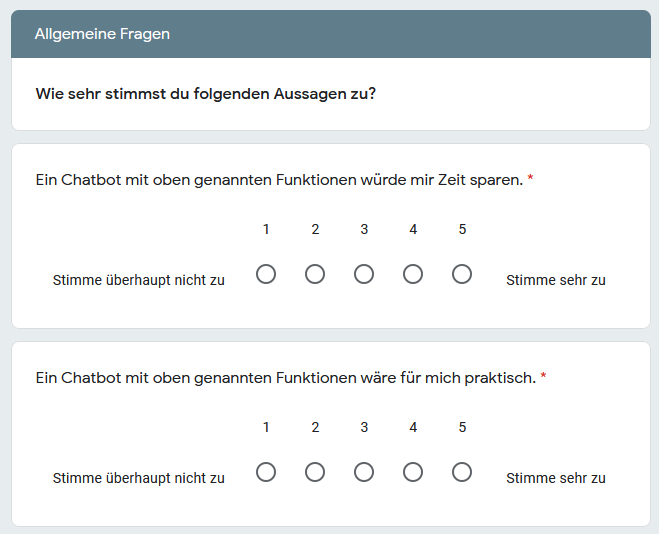
Personas
Based on the results of the online survey and interviews, two personas were created.
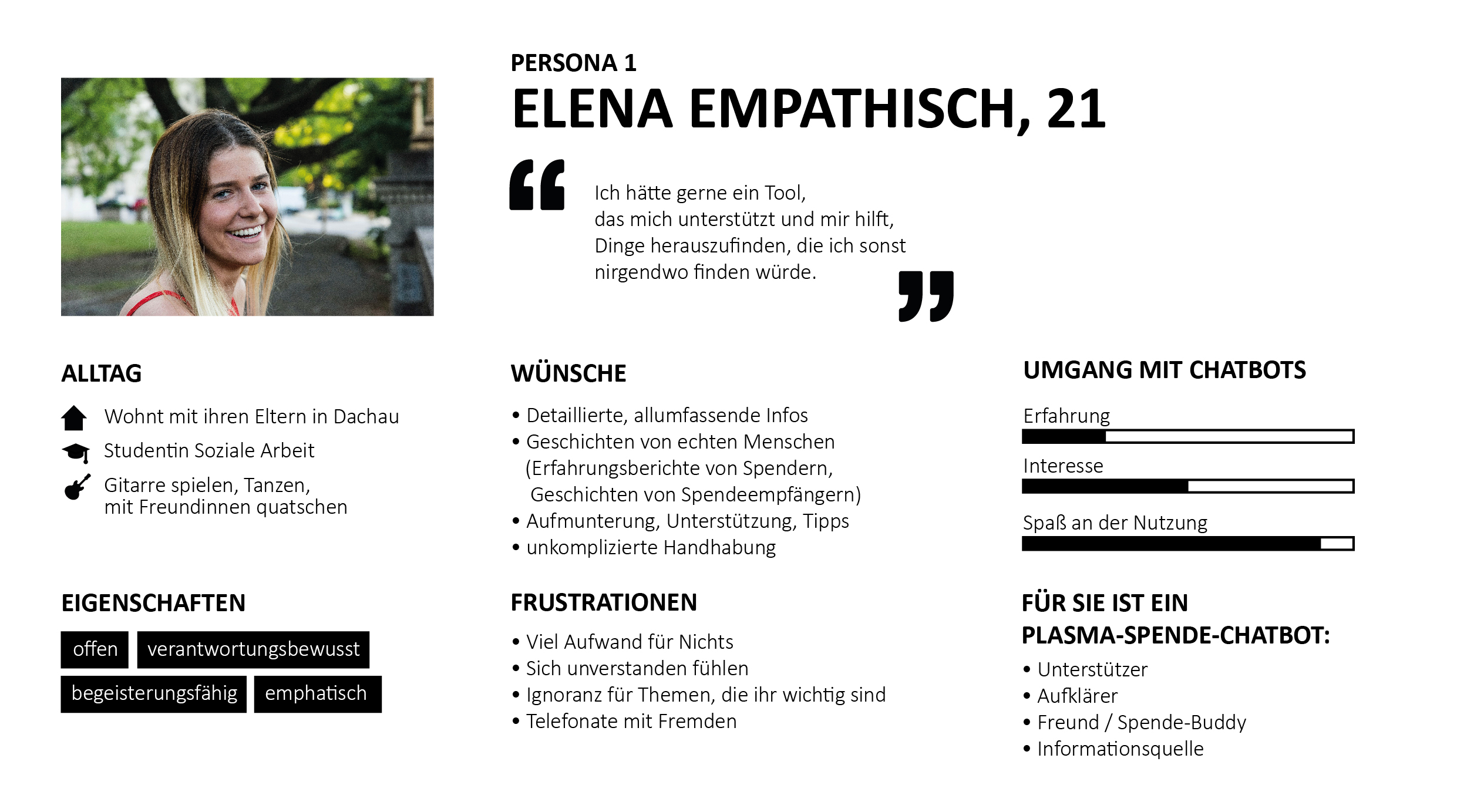
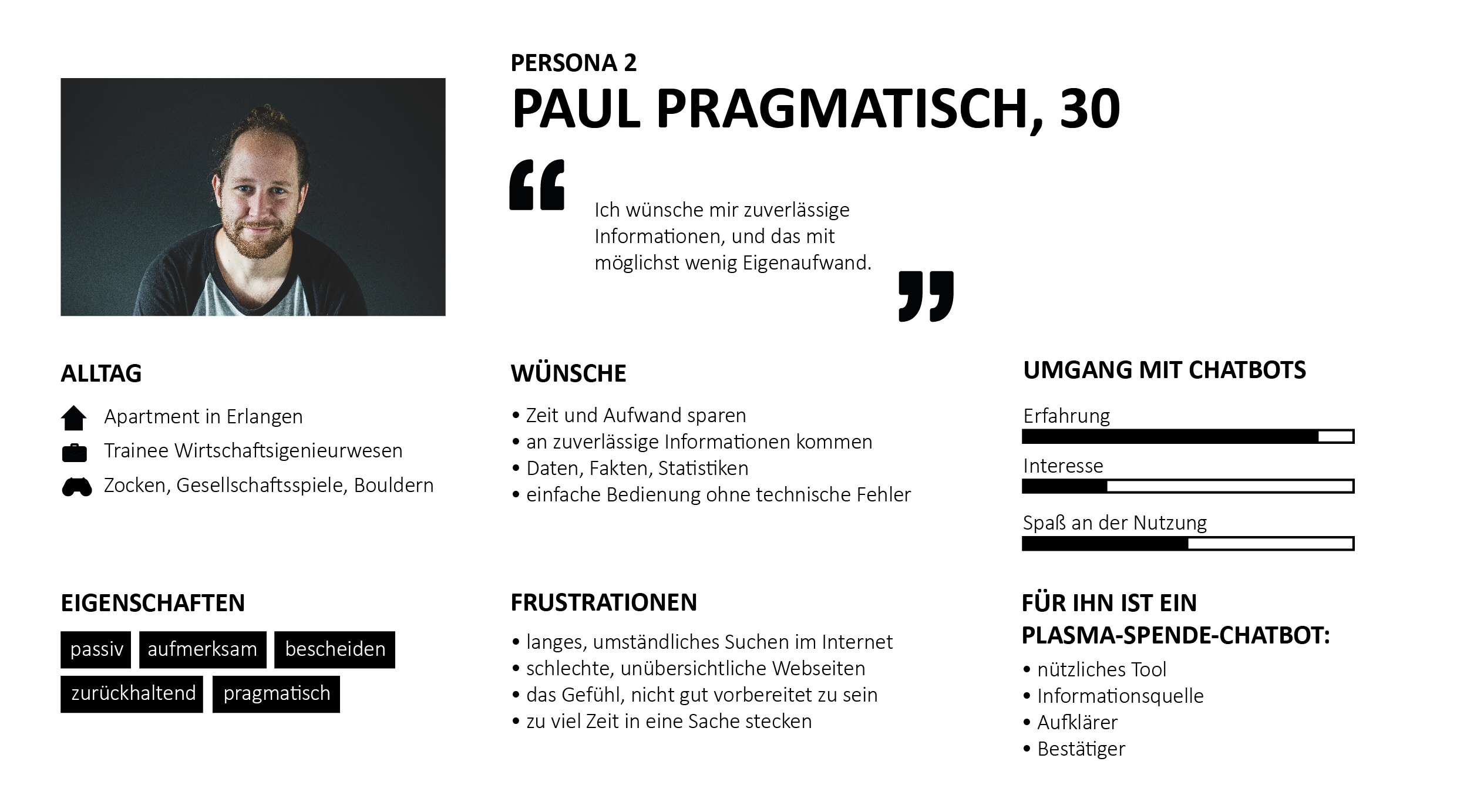
Chatbot content
The chatbot´s most important task is answering questions. In order to determine the relevant content I used the insights gained during the analysis phase and conducted research on the websites of different plasma donation services in Germany and Austria. 69 questions from these resources were categorised to be used later for the implementation of the chatbot.
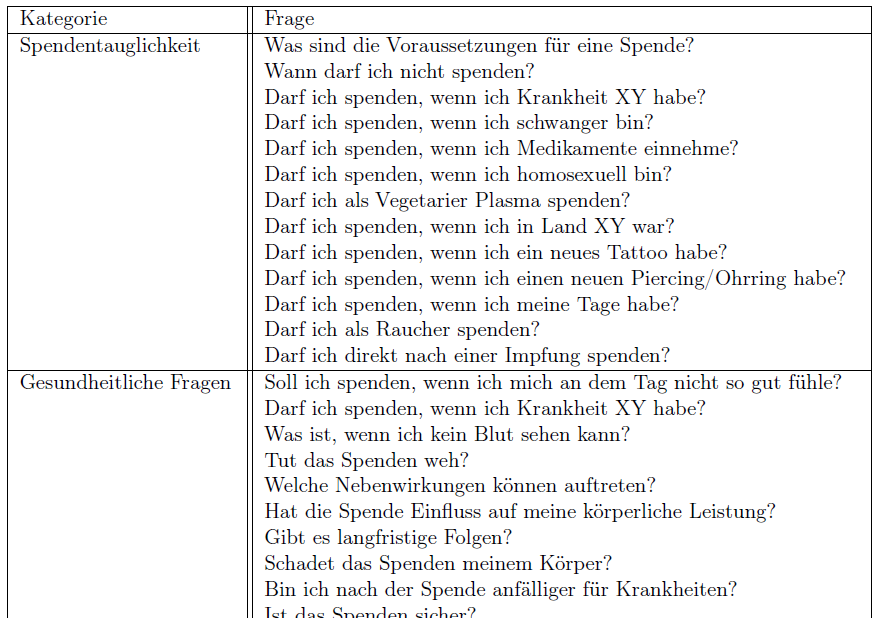
Chatbot personality
Scientific studies show that the personality of a chatbot is crucial for a high user experience and the users' desire to continue using the chatbot.
The personality of the plasma donation chatbot was developed using the well-known "Big 5" personality model. For the concrete language style of the chatbot, this means that it behaves in a friendly, helpful and conscientious manner. This is expressed, for example, in the use of everyday informal language and emojis.
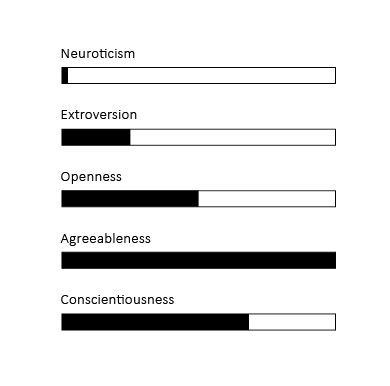
Implementing the prototype
Using the findings from the previous research, the chatbot was implemented prototypically with IBM Watson Assistant.
User testing
Finally, a comparative evaluation with 20 participants aged from 21 to 55 years was carried out with the website of the donation service Heama. To get a broad understanding of the differences in the UX, the usability and the time on task using these two systems, I conducted a usability test interviewing the users and letting them solve tasks with both chatbot and website while thinking aloud. Also the standardised questionnaires UEQ and SUS were used.
The chatbot performed significantly better than the website in terms of user experience, usability and time to complete tasks.
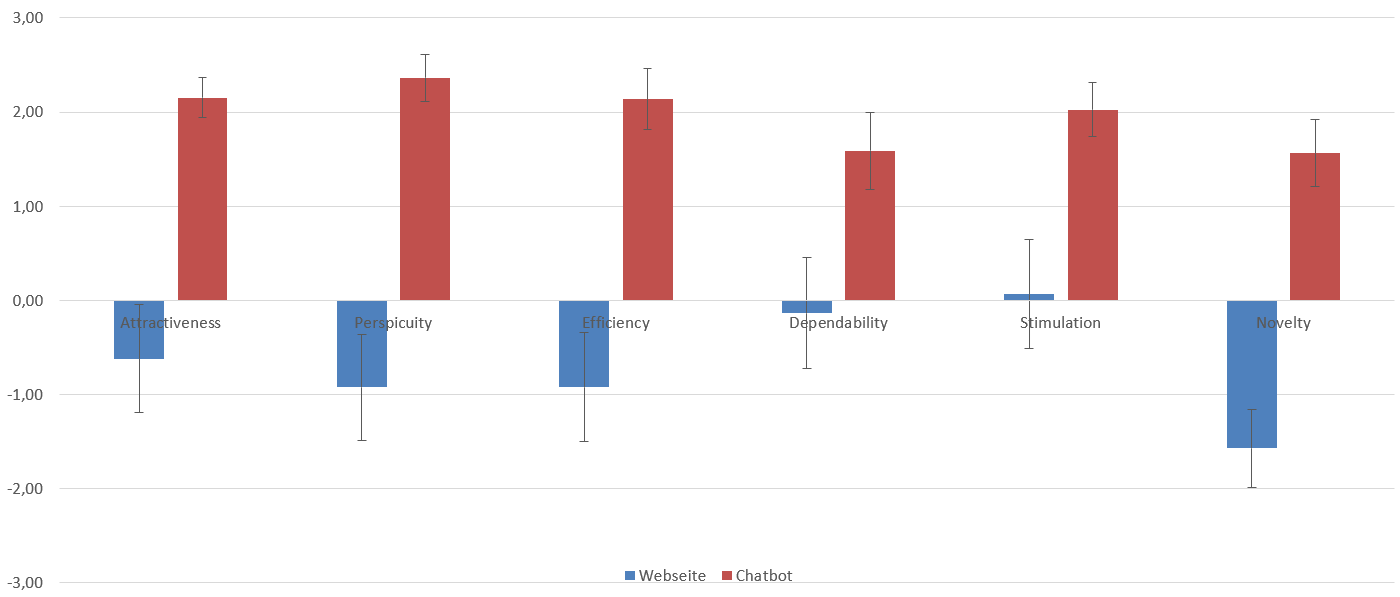
The qualitative feedback also showed some possible improvements of the chatbot in the future, for example:
- Improving the readability of long texts by adding paragraphs or bold printing important words
- Enriching the answers with more graphics or videos
- Better conversation management during complex interactions such as booking an appointment, e.g. cancelling the process, jumping back to previous points in the conversation...